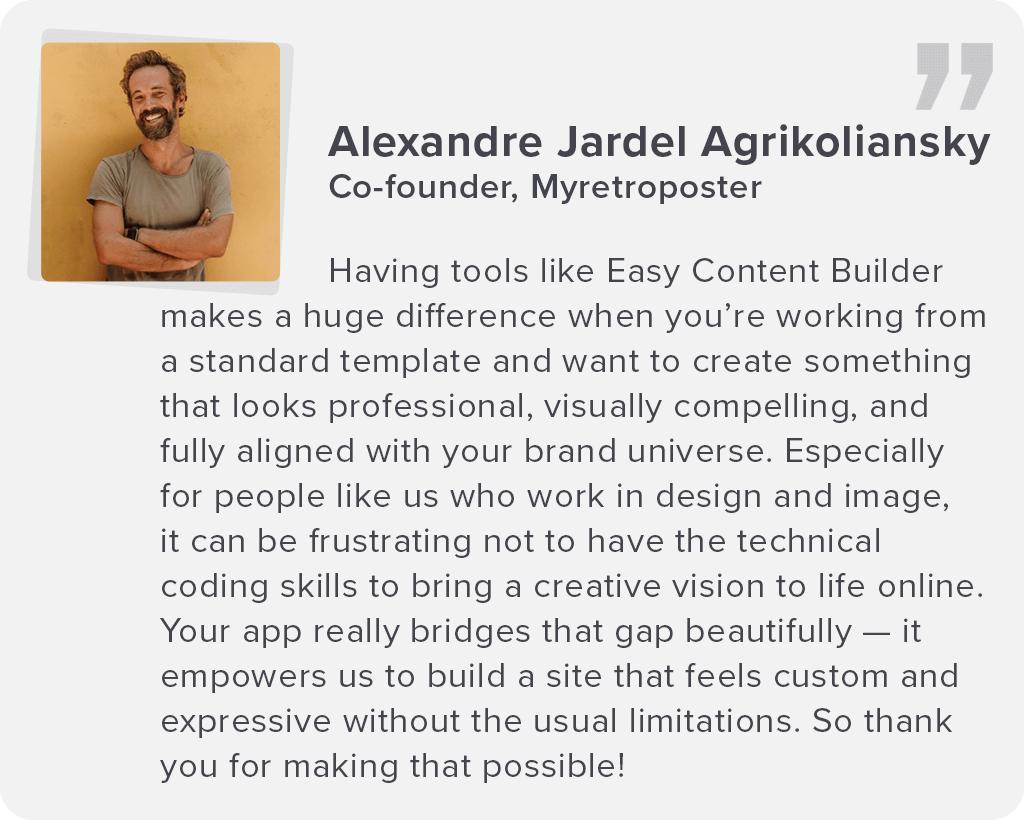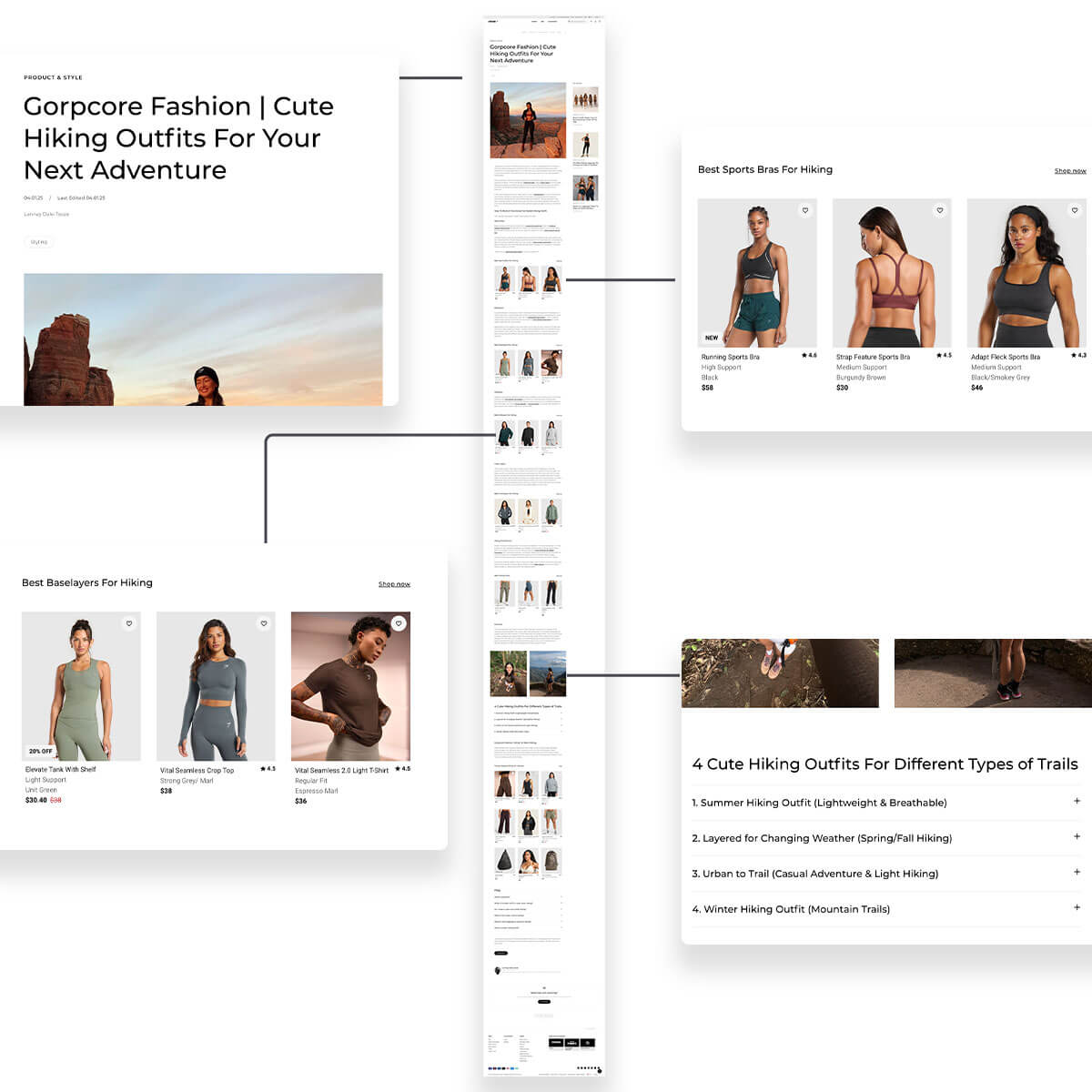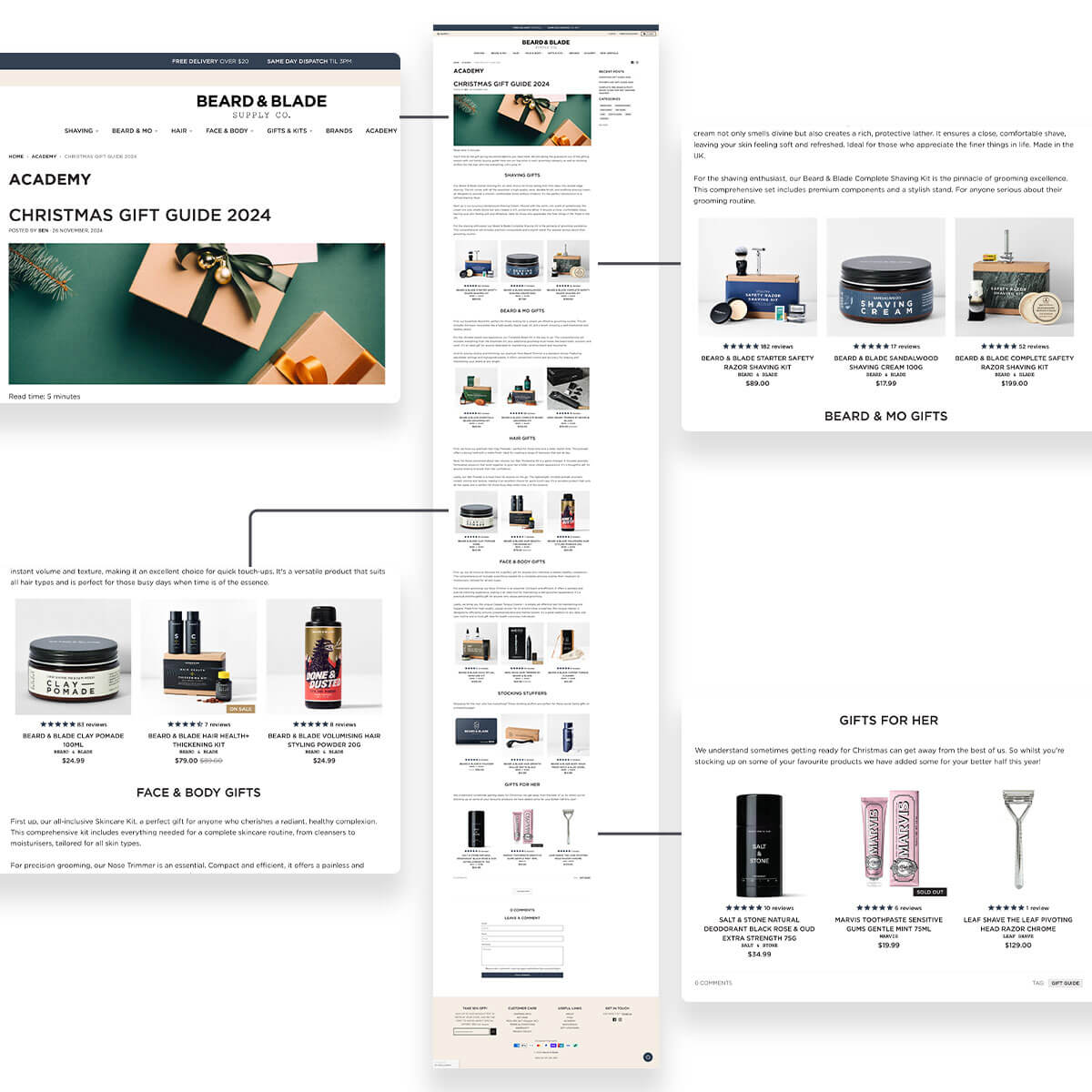- How to design a stunning blog post template on Shopify
- 5 Great Blog Examples from Real Shopify Stores You Should Check Out
Are blogs still relevant for your e-commerce business these days, especially with ads dominating the scene?
Look at big brands like Gymshark and Stanley — they rank for tons of niche keywords and attract hundreds of thousands of visitors each month.
If you’re not adding a blog to your Shopify store, you’re missing out on a great way to connect with your audience, boost your brand image, and share your values.
Effective blogging can drive valuable SEO traffic to your product pages without relying solely on ads.
In this article, we’ve selected 5 impressive blogs from real Shopify stores that demonstrate how powerful blogging can be for business growth.
Before we dive into the list, let’s explore an easy way to create eye-catching blog post templates on Shopify without any coding skills.
How to design a stunning blog post template on Shopify
You want to start a blog on Shopify? What’s the best way to create unique, eye-catching layouts that reflect your brand?
Having a tool like Easy Content Builder, you can create a customized blog on Shopify without needing a developer. For instance, take a look at how Myretropostter used Easy Content Builder to create an impressive blog for their store.
 Check out Myretroposter's blog here.
Check out Myretroposter's blog here.
After using Easy Content Builder to customize their Shopify store (built entirely on top of the Dawn theme), the co-founder of Myretroposter shared their experience with us.

You can choose from pre-built blog post templates in Easy Content Builder or create your own layout, depending on what you prefer. Mix and match various content sections to customize those templates to your liking—all through your Theme Editor. Here are some multi-column blog post templates from Easy Content Builder to inspire you:
 Examples of pre-built blog post templates designed with Easy Content Builder.
Examples of pre-built blog post templates designed with Easy Content Builder.
5 Great Blog Examples from Real Shopify Stores You Should Check Out
Here are 5 Shopify blogs to inspire your own, along with practical tips. They highlight that while it takes effort to build a blog on Shopify, the rewards — like more traffic, better customer relationships, and increased sales — are definitely worth it.
Missoma (Jewelry)
Missoma is a leader in demi-fine jewelry that boosts confidence and encourages self-expression. Each piece is handcrafted and designed at their studios in Notting Hill, London.
 Check out Missoma's blog.
Check out Missoma's blog.
Their blog effectively showcases products by embedding images and product cards within the content, linking them to what readers are interested in. Using engaging visuals helps break up long text blocks and keeps visitors on the page longer.
Takeaways: Like Missoma, creating high-quality, search-friendly content can attract organic traffic without relying on ads. While search visitors may not be ready to buy right away, they’re still valuable entry points into your sales funnel, leading them to related product pages.
Gymshark (Gym apparel)
 Check out Gymshark's blog.
Check out Gymshark's blog.
Gymshark's blog is one of the best examples on Shopify. They use a two-column layout, with a right sidebar displaying related blog posts, while the main section features long-form content, visuals, and recommended products. They use an H1 tag for their titles.
As a go-to destination for gym apparel, Gymshark turns their blog into an educational hub, offering high-quality, SEO-friendly content on various topics like workout routines and lifestyle inspiration.
As users scroll through the blog post, Gymshark allows them to add products to their cart without leaving the page. They also include FAQs to provide more in-depth guides.
Takeaways: Creating step-by-step guides is one of the best and lowest-cost ways to generate traffic and boost sales for your Shopify store. Just like Gymshark targets gym-goers with relevant keywords, you can do the same in your niche. Incorporating product cards with an ajax-add-to-cart feature, FAQs, and engaging visuals like videos and GIFs can effectively grab users' attention.
Stanley (Durable drinkware)
 Check out Stanley's blog.
Check out Stanley's blog.
Stanley, founded in 1913, has been a go-to for outdoor adventures and everyday use with their reliable, durable, leak-proof drinkware.
They smartly use their blog to build a connection with people online. It's not just about selling products, it's about promoting a lifestyle filled with adventure. They share a variety of experiences and inspiring stories.
Their blog features a straightforward 1-column layout, starting with a big H1 title and a large hero image. They enhance their posts with visuals, product shots, and videos that relate to each specific topic.
Takeaways: Blogs help you engage potential customers at every stage of their journey, whether they’re just discovering your brand, comparing options, or ready to buy. Even if they’re not planning to purchase right away, useful guides keep them coming back and thinking of you when it’s time to make a decision.
Urth (Tools for photographers)
 Check out Urth's blog.
Check out Urth's blog.
The Urth blog truly stands out as a lifestyle magazine, not just a typical blog. Their blog layout is clean and minimalist with high-quality photography.
Urth's posts use narrow text blocks paired with beautiful visuals, including product images and various grid layouts (full-width, 2-column, 3-column, etc.). This setup makes for an attractive layout while enhancing text readability.
Urth blog covers diverse topics like Art, Design, Places, and People to cater to various audience interests. Like many Shopify brands, they focus on tips, guides, and inspiration tailored to different search intents.
Takeaways: If your products ties to visuals like photography, rich lifestyle content is key. Also, a single-column design for blog posts works great for mobile users.
Beardandblade (Men's grooming store)
 Check out Beardandblade's blog.
Check out Beardandblade's blog.
Beard & Blade, founded in 2007, has quickly become Australia’s largest store for men’s grooming products, including shaving, beard care, hair styling, and skin care.
Rather than a flashy design, they choose a minimalist approach with a straightforward 2-column layout. A small sidebar highlights Recent Posts and key Categories, while while the main content seamlessly incorporates product links within the text.
They focus on providing helpful tips and guides first, which not only drives sales but also builds trust over time.
Takeaways: Avoid heavily pitching products in every blog post. Instead, create content that genuinely helps your customers, whether they’re ready to buy or not. By ranking for organic keywords, you can attract a broader audience, including those who may have a problem but aren't yet aware of your product.
Conclusion
You’ve seen how effective blogging can be for your business when done right. Now, it’s time to set up a blog for your Shopify store.
Using the best practices from the examples above and no-code tools like Easy Content Builder, you can create advanced, fully customizable blogs that look professional and reflect your brand — without any coding needed.
Here are some prebuilt blog post templates from the Easy Content Builder app to get you started:
- Blog post template - Art & Posters
- Blog post template - Jewellery
- Blog post template - Cosmetic
- Blog post template - Clothing
Just a quick reminder, building a blog takes time and effort, but the rewards are worth it. Blogs can boost your SEO, funnel traffic to your products, enhance your brand’s personality and authority, and help you build a community. Most importantly, it allows you to connect with your audience on a deeper level.
